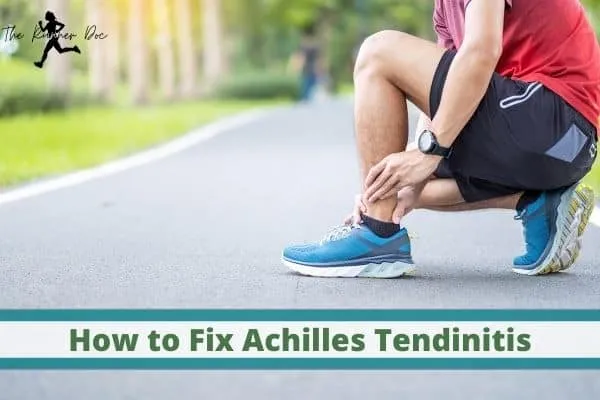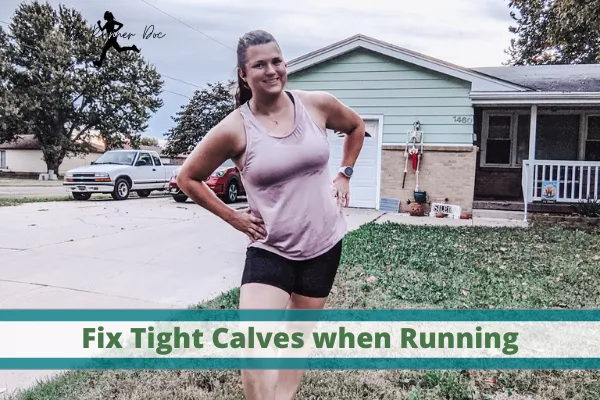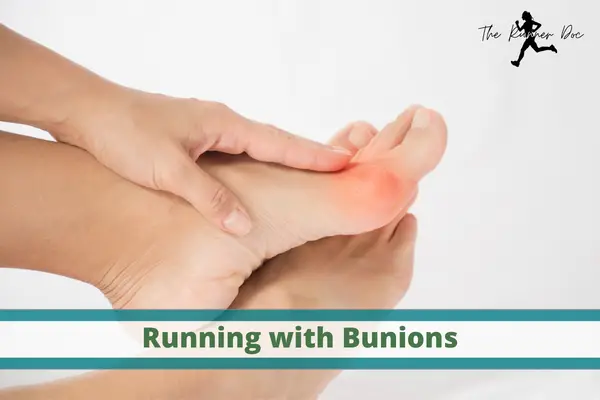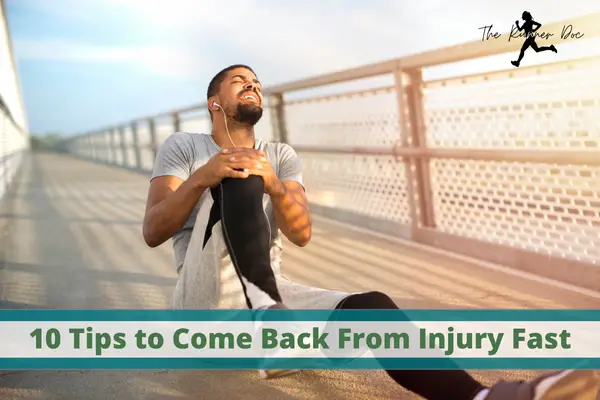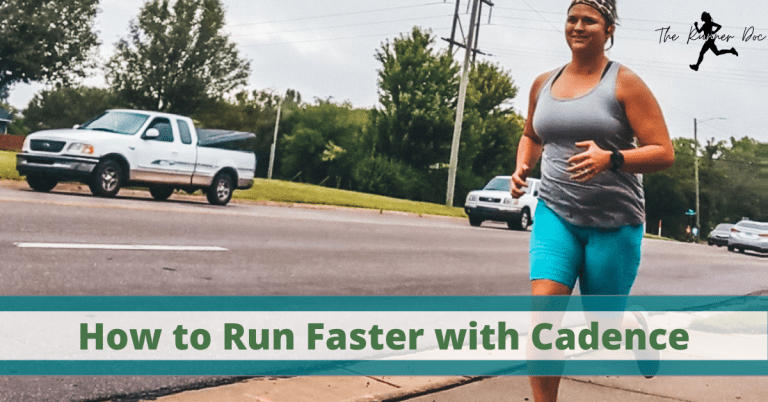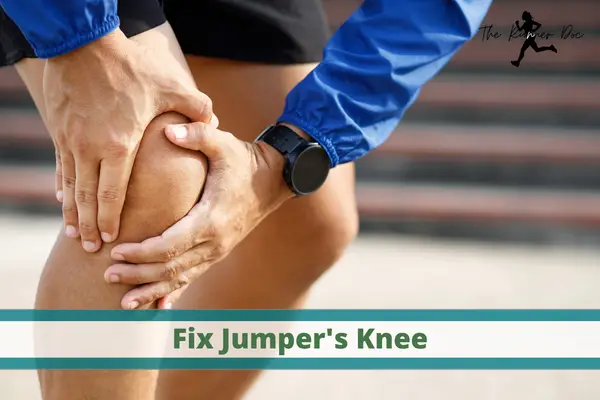How to Fix Achilles Tendinopathy
How Runners Can Fix Achilles Tendinitis
I’m just going to keep the foot train going here. I guess it is officially becoming a series all about the feet for runners. This next one on the list is how to fix achilles tendinopathy or tendinitis.
If we go back to my article about the common types of heel pain you will see that this one makes the cut.
Achilles tendinopathy affects 24% of active and inactive individuals. So to say it is common is almost an understatement. In fact, 50% of runners will have achilles pain at some point in their running careers.
Anatomy of Achilles Tendinopathy
What is the achilles tendon? Your calf muscle (there are actually 2 of them) start up by your knee and come down and insert or finish at your heel. The tendon that is on the back of your foot/heel/leg, THAT is your achilles tendon. It is what attaches your calf muscle to your heel bone.
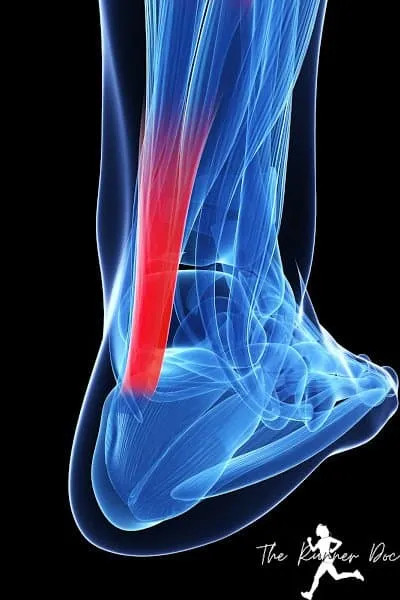
This tendon is very robust and strong. It is crazy to me that it can handle loads of 12 times your weight. Let that nugget sink in.
The function of the Achilles tendon is to transmit force from the calf muscles down into the foot when you push off the ground during running and jumping. It then also helps to control the position of the ankle when you land again.
The Achilles tendon can take loads of 12 times the body’s weight.
What Causes Achilles Tendinopathy in Runners
Most often tendinopathy is caused by a mechanical disruption in runners. Meaning that the tendons do not go through adequate repair from loads being applied and the result is the breakdown of tissue.
We are just going to keep going back to training errors and mistakes that runners make that lead to injury. These will almost always be the cause of an injury in relation to runners.
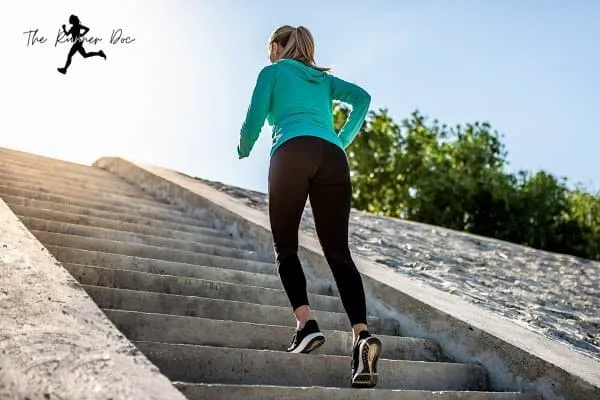
It is a result of putting more load on the tendon than it has the ability to function with. It can also happen over time which is most common or in an isolated incident.
Tendinitis vs Tendinopahty
Just a quick review. You will see me refer to this as both tendinitis and tendinopathy. That’s because commonly it is referred to as tendonitis but in reality it is a tendinopathy.
Tendonitis – (tendinitis) is an inflammation of a tendon. This isn’t the correct name for a tendon injury as we have previously thought. The inflammatory phase of a tendon injury actually only lasts for up to 48 hours. Also, typically if it is a true inflammation disorder rest, ice and ibuprofen will fix it and you will be back on the road running quickly. As many of you know though, this is rarely the cure-all.
Tendinopathy – (tendinosis) is the breakdown of the collagen that is the building block of a tendon. It is characterized by burning pain and decreased flexibility in the area. It used to be believed that tendinopathy occurred as a chronic result of tendinitis which is no longer the case.
Diagnosis of Achilles Tendinopathy in Runners
Imaging and a clinician are typically needed to truly diagnose a tendinopathy. However, there are a few key features to be on the lookout for.
The first is tenderness with activity. I’m guessing that you are looking on the internet because something just doesn’t feel quite right. This can also be stiffness and not just pain, especially with the first few steps.
The second, is tenderness when you palpate or push on the tendon. The pain might be anywhere from your heel or higher up through your tendon.
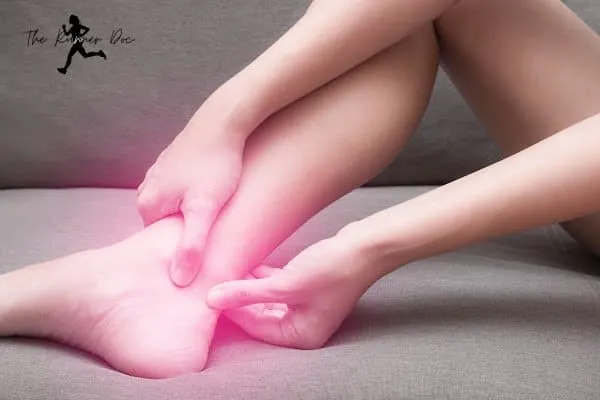
The best indicator of something wrong is when you have both of these symptoms. One without the other doesn’t always mean tendinopathy. If you only have tenderness when you push on it, you could’ve just bumped it and have a non-visible bruise.
Symptoms of achilles tendinopathy can result in a limited ability to walk, climb stairs, or run.
Treating Achilles Tendinosis in Runners
Conservative treatment has been the most successful way to fix achilles tendinopathy and get runners back to doing what they love.
There are several factors that need to be addressed when trying to treat and fix the achilles tendon pain.
These include:
- Calf muscle tightness
- Calf muscle weakness
- Abnormal foot structure
- Abnormal foot mechanics
- Improper footwear
- A change in an exercise routine or sport activity
- Obesity
Strengthening is the first and really only mode of defense when it comes to recovering from a tendinopathy. In the past RICE has been prescribed when it was thought that tendinopathies were really a tendinitis. RICE means rest, ice, compression, and elevation. However, it is no known to be contraindicated to completely rest when a tendinopathy arises.
Since the tendon is injured due to too much load, if you rest the minute you go back to exercising once the pain has gone away you will usually start having the same pain again relatively soon. Then a cycle will begin.
Rest isn’t the answer because it stops putting load on the tendon to help it repair and rebuild. If you are trying to build and rehab a weak muscle you don’t rest it right? So why would we do that with a weakened tendon?
Strengthening Exercises for Achilles Tendinopathy in Runners
When addressing a tendinopathy we always start with strengthening. Stretching has been the go-to starting point for decades with any injury however this is not the first thing you want to do.
Since tendinosis is caused by excessive load on the tendon we want to start with eccentric strength. Stretching places more load on the tendon and strengthening through a range of motion does as well.
The Alfredson Protocol
Stretching for Achilles Tendinopathy in Runners
I love mobility work. I promote it and advise others to do it as an injury prevention technique. However, when it comes to preventing injury in tendons, there isn’t much evidence. In fact, one review of the literature stated “No evidence was found for a positive effect of stretching exercises”. (Peters et al.)
Due to this, I’m not going to promote any mobility work for the prevention of or to fix Achilles Tendinopathy. It is always good to do but there isn’t anything specific that has been proven to help prevent it other than decreasing your risk factors. (don’t train too much!!)
Final Thoughts on How to Fix Achilles Tendinopathy
This can be a process. It can take several weeks to months to get back to pain free activity. If, after a few weeks of trying the above exercise program, you aren’t having much success, it is definitely time to seek professional help from a Physical Therapist. Preferably one that works with runners regularly.
Finding the root cause of the injury is also important. Whenever you develop an injury it is a good idea to have a Physical Therapist analyze your running gait to make sure everything is moving correctly biomechanically and give you advice on how to fix problem areas to help prevent injuries.
Achilles tendinitis or, as it should be called, tendinopathy can happen to anyone and will occur in 50% of all runners at some point. Hopefully this article will help you on your way to returning to pain free running sooner!
Related Running Injury Articles
How to Fix Flat Feet in Runners
Keep Running!!
AFFILIATE DISCLOSURE
As an Amazon Associate, I earn from qualifying purchases. This post may contain affiliate links. If you use these links to buy something we may earn a commission. The Site may contain links to affiliate websites, and we receive an affiliate commission for any purchases made by you on the affiliate website using such links.
Resources for Achilles Tendinopathy
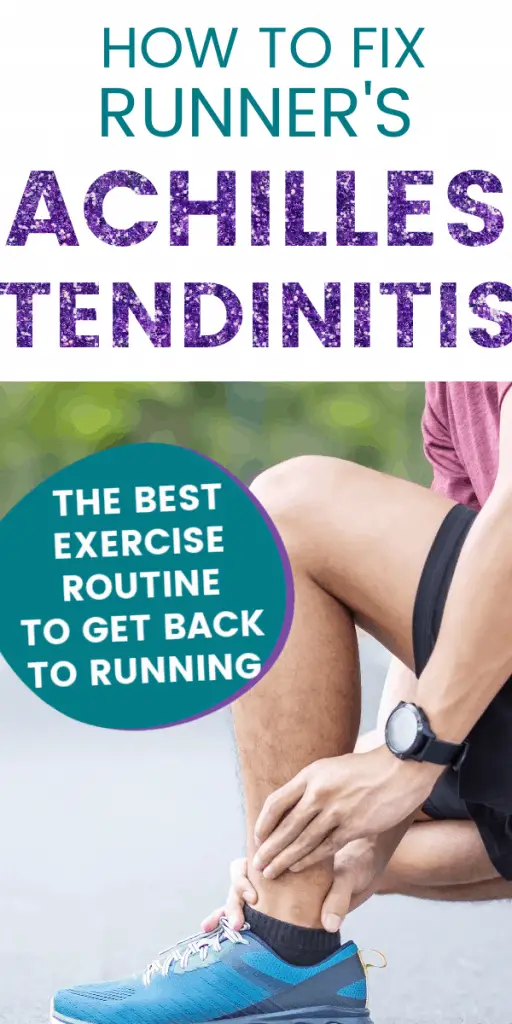
How to Fix Achilles Tendinitis
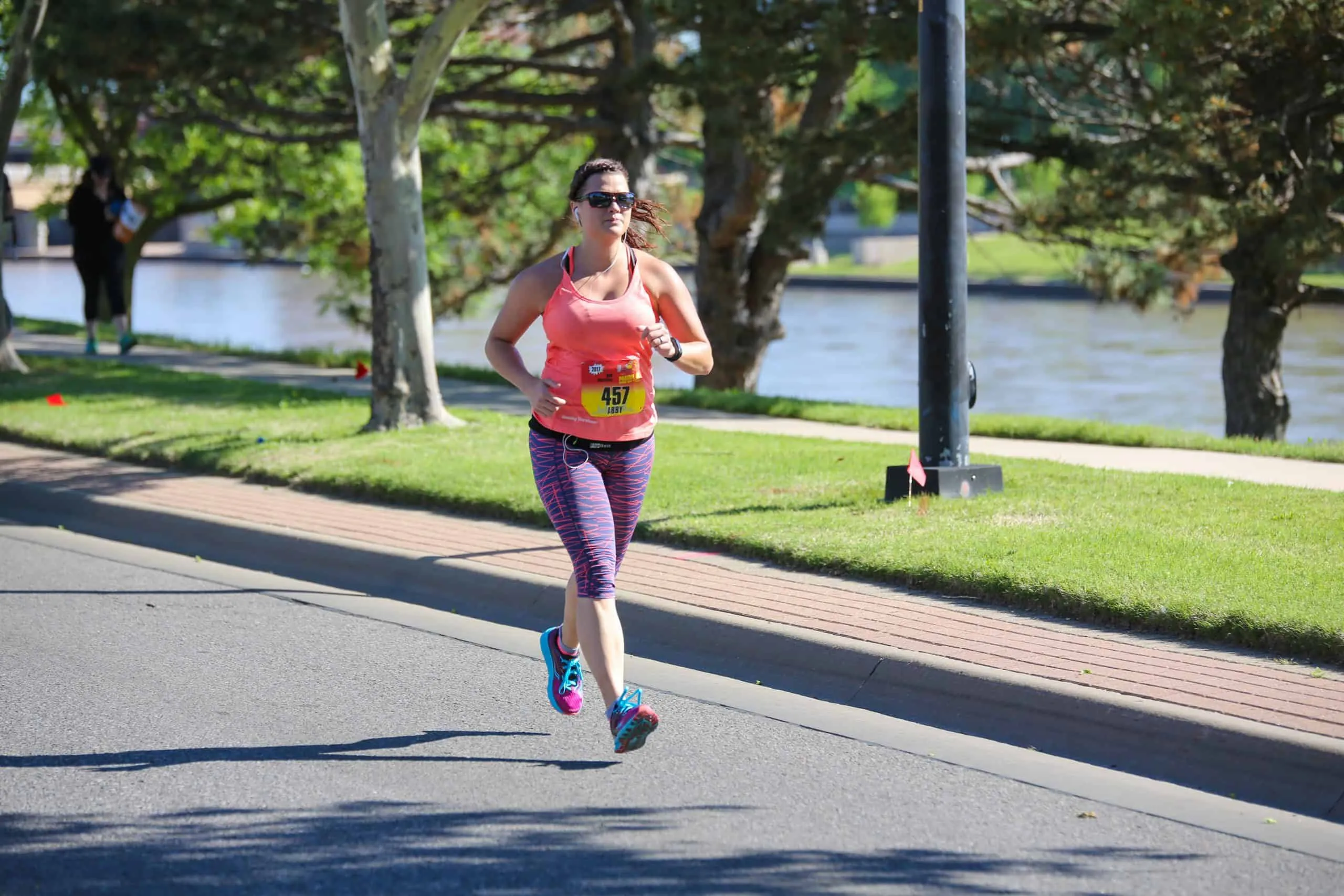
Dr. Abby Siler, PT, DPT is a Physical Therapist with 10 years of experience in a variety of settings. She has spent the majority of her time treating athletes in orthopedic clinics and worker’s compensation cases. She is a runner herself for the past 15 years and a lifelong athlete. Dr. Abby loves to teach runners how to stay injury free and out of her clinic.

